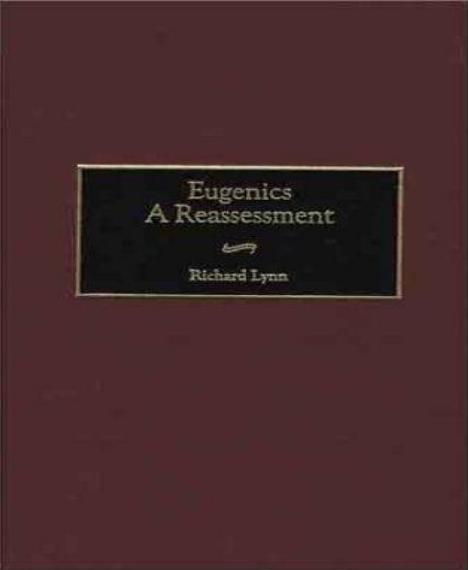Eugenics: A Reassessment by Richard Lynn

Author:Richard Lynn [Lynn, Richard]
Language: eng
Format: epub, pdf
Tags: Psychology, Cognitive Psychology, science, General, Cognitive Psychology & Cognition, pol_guide, Demography, Social Science
ISBN: 9780275958220
Google: XaiF6MeXFmQC
Amazon: 0275958221
Publisher: Praeger
Published: 2001-01-01T05:19:10+00:00
Page 184
the District of Columbia fund free abortions for poor women on welfare, but others have to pay appreciable sums, and in the remainder of the states everyone has to pay fees. The federal government has prohibited the use of Medicaid funds for abortion except where a woman’s life is endangered. The costs of abortion are prohibitive for many teenagers and some adults. In the 1980s and 1990s a number of states introduced measures to make abortion more difficult to obtain, such as by imposing waiting periods, withdrawing subsidies, and requiring minors to obtain parental consent. As a result of these restrictions, the number of hospitals and clinics providing abortion declined, and fewer abortions were carried out. The abortion rate per 100 pregnancies fell from 29.3 in 1980 to 25.9 in 1992. As a result the percentage of illegitimate births increased in 1992 (Henshaw & Van Vort, 1994).
In a general review of this issue, Ohsfeldt and Gohmann (1994) concluded that these restrictive measures have been successful in their intention of reducing the numbers of abortions. Several studies have concluded that the availability of subsidized or free abortions funded by Medicaid increases the numbers of abortions (Henshaw, Koonin, & Smith, 1991; Meier & McFarlane, 1996). It has been estimated by Blank, George, and London (1996) that the impact of reducing financial assistance for abortion by Medicaid has been to reduce the numbers of abortions among Medicaid-eligible women by 25 percent. More generally, Lichter, McLaughlin, and Ribar (1998) concluded that the reduction in the number of abortion clinics by approximately 20 percent over the decade 1980–1990 was responsible for an increase of approximately 10 percent in the proportion of single mothers.
Another impediment to the use of abortion in the United States has been that when minors request abortions a number of states require that their parents should be informed and give their consent. By 1997, 27 states had made parental certification mandatory (Haas-Wilson, 1997). This has deterred a number of teenagers from having pregnancy terminations and has been responsible for a rise in teenage pregnancies in the 1980s and 1990s (Meier & McFarlane, 1994; Joyce & Kaestner, 1996a). The impact of the parental notification laws is illustrated by the experience in Minnesota, where a parental notification law was introduced in 1981. The abortion rate for 15- to 17-year-olds in the preceding three years (1978–1980) was 18.8 per 1,000 young women. Following the new law, the abortion rate fell to 12.8 per 1,000 young women in 1982 (Rogers, J. H., 1991). The lesson to be drawn from this is that teenagers’ abortions should be confidential.
The imposition of impediments of cost, availability, and time constraints on the ease of obtaining abortions inevitably has a dysgenic impact because these are going to be too great for some less intelligent and more psychopathic women to overcome. For some of these women it is easier to let the pregnancy take its course. Simms and Smith (1986) quote some of the typical explanations given by single teenagers in
Download
This site does not store any files on its server. We only index and link to content provided by other sites. Please contact the content providers to delete copyright contents if any and email us, we'll remove relevant links or contents immediately.
The Art of Thinking Clearly by Rolf Dobelli(10210)
Mindhunter: Inside the FBI's Elite Serial Crime Unit by John E. Douglas & Mark Olshaker(9186)
Change Your Questions, Change Your Life by Marilee Adams(7633)
Nudge - Improving Decisions about Health, Wealth, and Happiness by Thaler Sunstein(7613)
Mastermind: How to Think Like Sherlock Holmes by Maria Konnikova(7222)
The Power of Now: A Guide to Spiritual Enlightenment by Eckhart Tolle(5603)
Men In Love by Nancy Friday(5155)
Altered Sensations by David Pantalony(5043)
Factfulness: Ten Reasons We're Wrong About the World – and Why Things Are Better Than You Think by Hans Rosling(4691)
The Confidence Code by Katty Kay(4187)
Thinking in Bets by Annie Duke(4152)
Man and His Symbols by Carl Gustav Jung(4066)
The Worm at the Core by Sheldon Solomon(3430)
Why Buddhism is True by Robert Wright(3401)
Liar's Poker by Michael Lewis(3367)
Three Women by Lisa Taddeo(3353)
The Inner Life of Animals by Peter Wohlleben(3259)
Descartes' Error by Antonio Damasio(3229)
The Power of Mindful Learning by Ellen J. Langer(3184)
